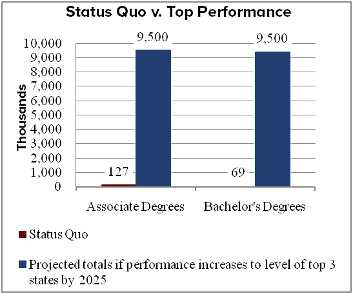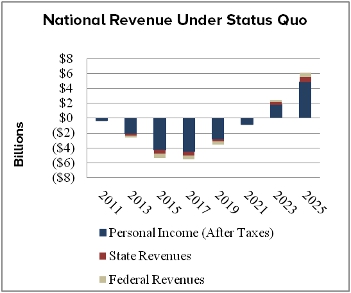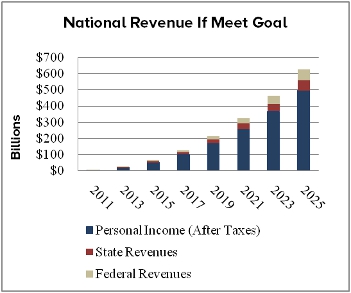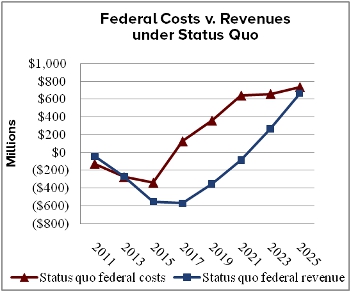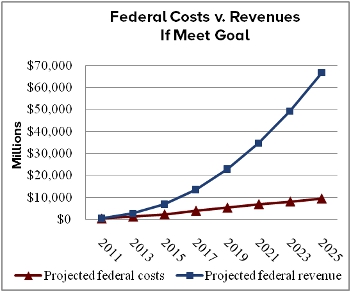The Return on Investment to Increasing Postsecondary Credential Attainment in the United States
Visit the national Return on Investment dashboard tool >>
(NOTE: Dashboard takes a few seconds to load.)
|
The United States Must Improve College Participation and Credential Attainment Rates to Remain Competitive |
|
|
|
|
Meeting Credential Goal Produces Significant Personal Economic Return |
|
|
Per capita income increases when the nation meets the 60% credential attainment goal.
|
|
|
Meeting Credential Goal Produces Significant Economic Returns |
|
|
Status Quo produces small returns Under current postsecondary investment patterns, total national revenue will increase by about $6 billion in 2025.
|
Meeting 60% credential goal pays off By meeting the 60% credential goal, total national revenue increases significantly, topping $600 billion in 2025.
|
|
Revenues Exceed Costs When Credential Goal is Met |
|
|
Status Quo: Costs exceed revenues Under current postsecondary investment patterns,
|
Meet 2025 goal: Revenues exceed costs By meeting the 60% credential attainment goal, federal revenues exceed postsecondary costs by about $58 billion in 2025.
|
|
This analysis was prepared using the CLASP-NCHEMS Return on Investment Dashboard tool. See clasp2022.tealmedia.dev/ROIdashboard |
|
